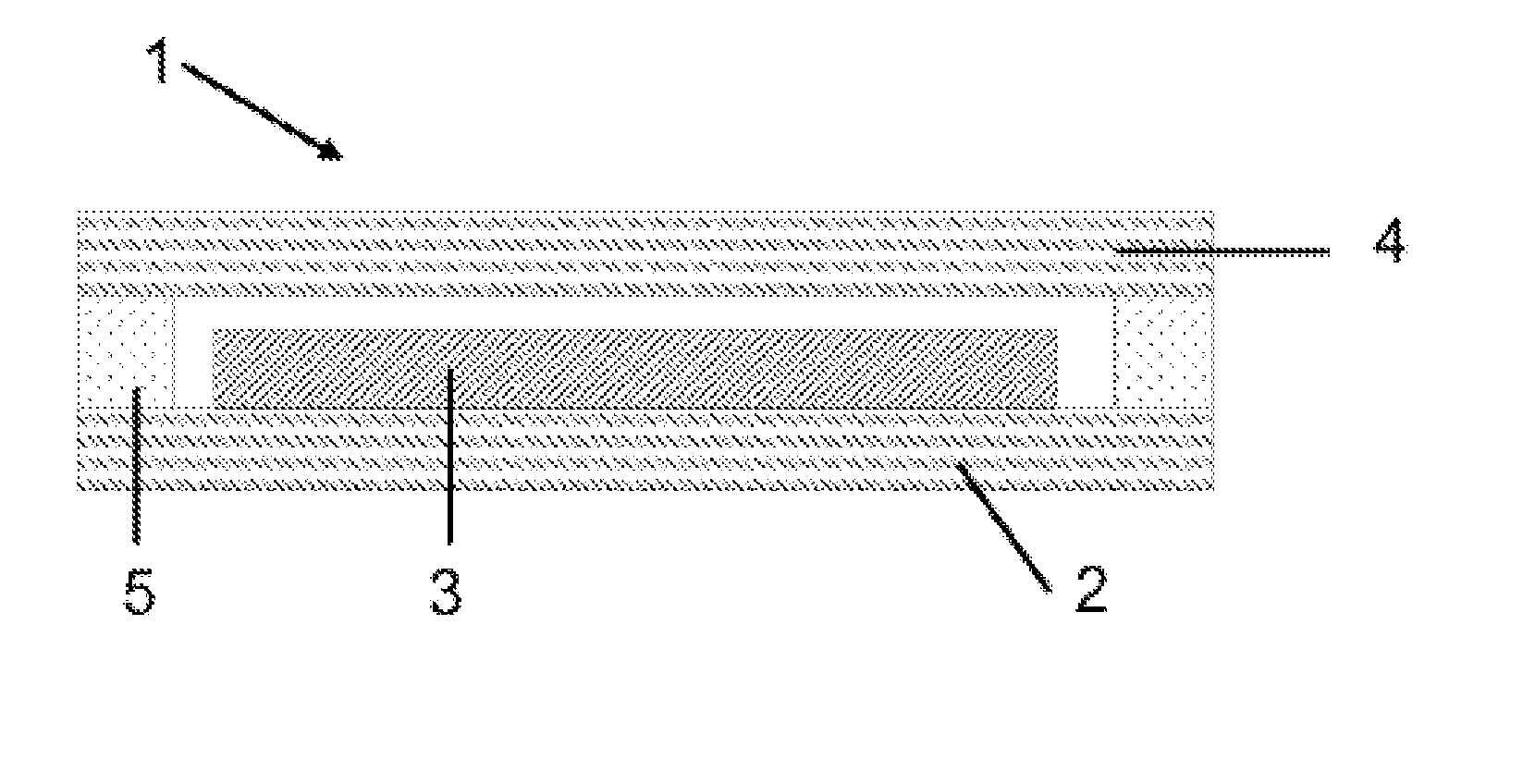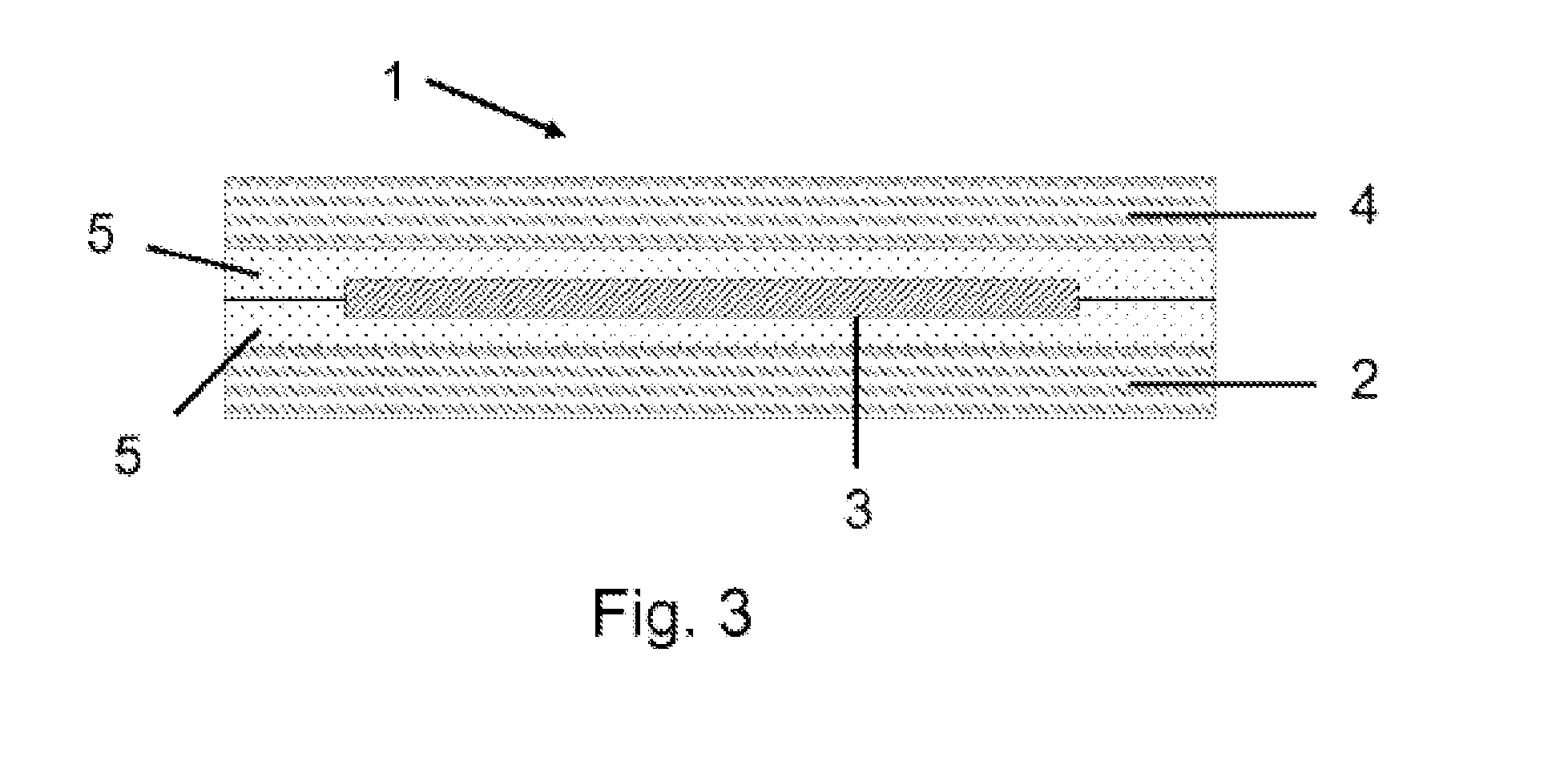Cross-linkable adhesive compound with hard and soft blocks as a permeant barrier
a technology of adhesive compound and permeable barrier, which is applied in the direction of adhesive process with surface pretreatment, heat-activated film/foil adhesive, film/foil adhesive, etc., can solve the problems of low flow capacity on the substrate, difficult to meet the requirements of the substrate, etc., to achieve good interfacial adhesion to different substrates, good barrier properties, good cohesive properties
- Summary
- Abstract
- Description
- Claims
- Application Information
AI Technical Summary
Benefits of technology
Problems solved by technology
Method used
Image
Examples
example 1
[0154]
100 parts SiBStar 103TTriblock SiBS with 30 wt % blockpolystyrene content from Kaneka, 7 mol %sulfonation30 partsSiBStar 042DDiblock SiB with 15 wt % block polystyrenecontent from Kaneka130 parts Regalite 1090Hydrogenated HC resin with softeningpoint of 90° C. from Eastman30 partsOndina G 17White oil comprising paraffinic andnaphthenic fractions from Shell 3 partsAluminum acetylacetonate 2 partsPentanedione
example 2
[0155]
50 partsKratonSEBS (styrene-ethylene-butylene-styrene)G1652 Mwith 30 wt % block polystyrene content fromKraton, 7 mol % sulfonation50 partsKratonSEBS with 13 wt % block polystyreneG1657 Mcontent from Kraton and a diblock fraction of29 mol %70 partsEscorez 5600Hydrogenated HC resin with softening pointof 100° C. from Exxon25 partsOndina G 17White oil comprising paraffinic andnaphthenic fractions from Shell2.5 parts Aluminum acetylacetonate2.5 parts Pentanedione
example 3
[0156]
50 partsSepton 4033Triblock SEEPS (styrene-ethylene / (ethylene-propylene)-styrene) with 30 wt % blockpolystyrene content from Kuraray, sulfonatedat 7 mol % 50 partsSepton 2063Triblock SEPS with 13 wt % blockpolystyrene content from Kuraray120 partsForal 85Hydrogenated rosin with a softening point of85° C. from Eastman 10 partsWingtack 10Plasticizer resin from Cray Valley 1 partAluminum acetylacetonate 1 partPentanedione
Adhesive Composition
PUM
| Property | Measurement | Unit |
|---|---|---|
| Tg | aaaaa | aaaaa |
| Tg | aaaaa | aaaaa |
| adhesive | aaaaa | aaaaa |
Abstract
Description
Claims
Application Information
 Login to View More
Login to View More - R&D
- Intellectual Property
- Life Sciences
- Materials
- Tech Scout
- Unparalleled Data Quality
- Higher Quality Content
- 60% Fewer Hallucinations
Browse by: Latest US Patents, China's latest patents, Technical Efficacy Thesaurus, Application Domain, Technology Topic, Popular Technical Reports.
© 2025 PatSnap. All rights reserved.Legal|Privacy policy|Modern Slavery Act Transparency Statement|Sitemap|About US| Contact US: help@patsnap.com



